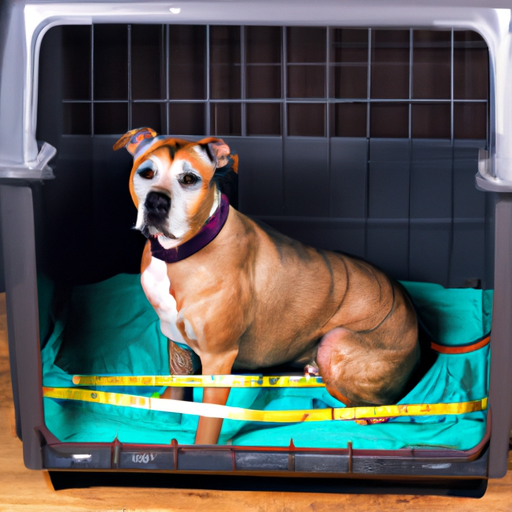Understanding the Importance of Crate Size
If you’re a loving and responsible dog owner, you might have wondered, “How big should my dog’s crate be?” You’re not alone in this quest. Many dog owners grapple with this question, often feeling lost in the sea of conflicting information. The truth is, the size of your dog’s crate matters more than you might think.
It’s not just about comfort—although that’s a significant part of it. It’s also about safety and wellbeing. A crate that’s too small can cause your dog discomfort, while a crate that’s too large can make them feel insecure. Therefore, choosing the right crate size is a crucial aspect of responsible pet ownership and reflects your role as a thoughtful caregiver.
Determining the Right Crate Size: Factors to Consider
There are several factors you should consider when determining the right crate size for your dog:
- Your Dog’s Size: An obvious but essential point. Measure your dog’s length (from the tip of the nose to the base of the tail), height (from the ground to the highest point of their shoulders or head), and width (across their widest point).
- Your Dog’s Breed: Some breeds require more space due to their physical characteristics and temperament.
- Your Dog’s Age: If you’re buying a crate for a puppy, remember they will grow. Consider a crate with dividers, so you can adjust the space as they grow.
- Your Dog’s Temperament: Some dogs are more active and may require more space to move around, even in a crate.
A Handy Crate Size Guide for You
Here’s a handy table to guide you in choosing the right crate size based on your dog’s weight:
| Weight of Dog | Crate Size |
|---|---|
| Under 25 lbs | 24 inches |
| 26-40 lbs | 30 inches |
| 41-70 lbs | 36 inches |
| 71-90 lbs | 42 inches |
| 91 lbs and up | 48 inches |
Remember, these are general guidelines and individual needs may vary. Always consider your dog’s comfort and safety above all else.
Additional Tips for Crate Training
Crate training can be a challenge, but with patience, consistency, and the right-sized crate, it can be a rewarding experience for you and your dog. Here are a few tips:
- Start by making the crate a positive place. You can do this by adding comfortable bedding and toys.
- Always associate the crate with positive experiences. You can feed your dog their meals in the crate or give them treats.
- Never use the crate as a punishment. It should be a safe and happy place for your dog.
Frequently Asked Questions
Q: Can a crate be too big for a dog?
A: Yes, a crate can be too big. If it’s too large, a dog might use one end for sleeping and the other for eliminating, which defeats the purpose of crate training.
Q: Can my dog’s crate be too small?
A: Yes, a crate can also be too small. If your dog can’t stand, turn around, or stretch out, the crate is too small, and it can cause discomfort or even injury.
Q: Should I get a different crate for a puppy?
A: Not necessarily. Many crates come with dividers which allow you to adjust the space as your puppy grows.
Remember, your dog’s crate is their safe haven. It’s a place where they can retreat, rest, and feel secure. As a caregiver, it’s your responsibility to ensure that you choose the right crate size, making your dog’s wellbeing a top priority.



